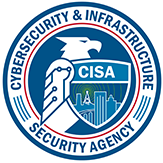Listen to article:
By Dave Howard
Executive Director, Cyber Operations and Delivery
Keith McCloskey
Chief Technology Officer
and Mark Maglin
Vice President, Department of Defense Cybersecurity
As the cyber threat landscape evolves at a record pace, federal organizations that integrate and operationalize cyber threat intelligence (CTI) can improve the speed and accuracy of their responses and move from a reactive to a proactive state.
Robust CTI capabilities — the collection, analysis, dissemination, and use of cyber threat data across an organization — are critical for federal organizations to stay one step ahead of today’s advanced threat actors.
With operational visibility into correlated and enriched cyber data, organizations gain new insights into exploitable vulnerabilities and potential targets. They also gain a full understanding of adversaries’ tactics, techniques, and procedures (TTPs) and relevant indicators of Compromise (IOCs). Taken together, these insights empower organizations to proactively safeguard their digital assets and enhance their overall cybersecurity posture.
For federal organizations, the stakes — national security and the public welfare — could not be higher.
However, as federal organizations seek to strengthen our nation’s digital defenses, two prevalent challenges often impact or delay successful CTI implementation: evolving the organization from a reactive to a proactive cyber defense mindset, and a lack of guidance for effectively using purchased CTI services and tools.
Challenge #1: Evolving From a Reactive to a Proactive Cyber Defense Mindset
The first challenge to advancing federal cyber intelligence is the tendency to get stuck in a reactive cyber defense mindset. CTI can help organizations mature their capabilities toward a more proactive approach that helps them prioritize risks and vulnerabilities, better anticipate attacks, and “aim at the right targets;” but, there are numerous factors that can hinder them from realizing those capabilities:
- Federal organizations often struggle with recruiting and retaining skilled cyber intelligence personnel, for reasons such as intense competition for a limited pool of talent, the lengthy security clearance process, and bureaucratic hurdles. This talent shortage and lack of continuity can be devastating in an environment that demands technical proficiency and continuous learning.
- Budget and resource constraints can limit an organization’s ability to invest in advanced CTI tools or hire qualified personnel.
- A lack of standardization in processes and tools can lead to inconsistent and sometimes ineffective threat responses.
- Federal organizations, due to regulatory and compliance requirements, are often forced into a risk-averse posture regarding new technology, which can make it more difficult to integrate modern CTI solutions.
Challenge #2: A Lack of Guidance Prevents the Effective Use of CTI Services and Tools
The second challenge preventing federal organizations from fully realizing CTI capabilities is a lack of clear guidance on using purchased CTI services and tools. While there is no shortage of sophisticated products available in the market, federal organizations often find themselves overwhelmed by the sheer volume of data and underwhelmed by the actionable intelligence derived from it.
This disconnect stems from a lack of strategic alignment between the tools’ capabilities and the organization’s specific needs and objectives. In other words, purchasing cutting-edge CTI solutions alone does not guarantee improved cybersecurity; that requires a well-defined strategy and adept utilization. Without proper guidance and expertise, these tools become underutilized assets rather than force multipliers in the cyber defense arsenal.
From Risk to Resilience
For the federal cyber ecosystem, progressing towards a more mature, informed, and resilient future will require a transformative journey. To embark on that journey, here are a series of steps that every federal organization should consider taking:
Managed Cybersecurity and CTI Services. At ECS, we recognize that one size does not fit all and that simply buying more tools does not equate to achieving improved cybersecurity or leveraging CTI. Through our Cybersecurity Operations Maturity assessment, we help our federal, state, local, and commercial customers:
- Assess their capabilities
- Develop and implement roadmaps to adopt and leverage the right processes, tools, and managed services
- Integrate CTI services and automation to drive a more proactive cyber defense posture
CTI capabilities are essential to elevating the security posture of federal organizations, and the stakes could not be higher. Ready to grow from risk to resilience and shield the nation?













